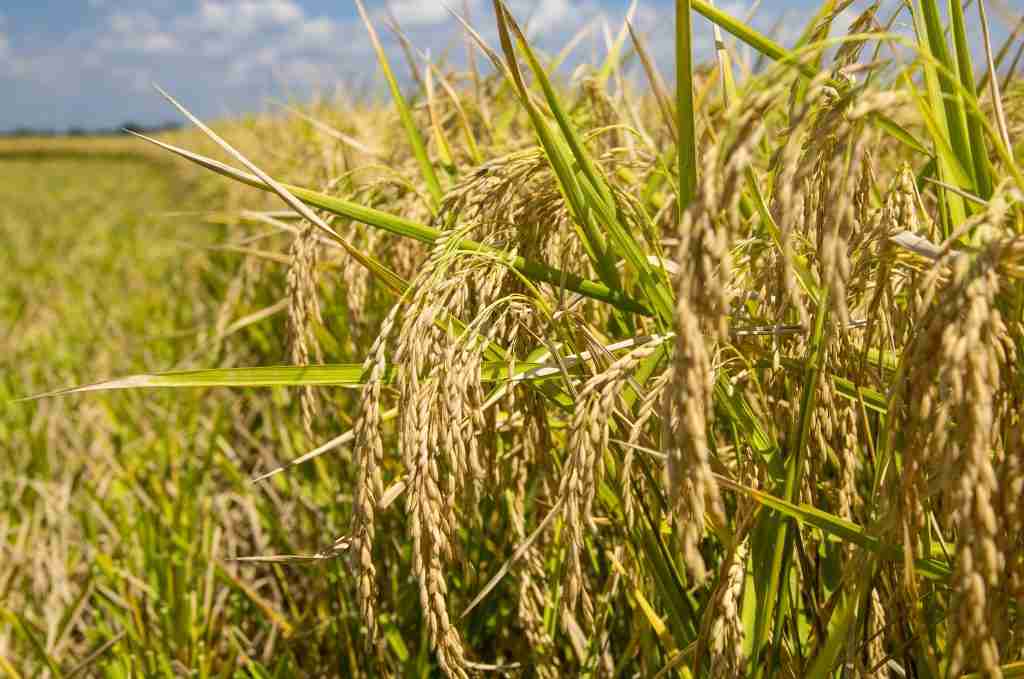Tags
Idukki farmer gives native rice variety a chance
Over the years, as the government started supplying subsidised rice and the menace of wild animals and natural calamities combined with farmers’ difficulty to meet labour costs, most of them withdrew from paddy cultivation.

P G John holds the paddy sheave of the traditional rice variety being preserved by him at his 5 acre land in Korangatti.
Nejma Sulaiman
IDUKKI : Kerala’s lush, fertile plains have over the ages harboured the best varieties of paddy. Yet, paradoxically, the country’s ‘Green Revolution’ – which was supposed to protect and sustain these indigenous varieties that have stood the test of time – killed off most of them.
In Idukki, however, which has the least amount of area under paddy cultivation in the state, a 66-year-old disabled farmer has been working relentlessly for almost 24 years to preserve a traditional variety of rice cultivated in Korangatti, a village under Adimali panchayat. P G John arrived in Korangatti, a tribal village perched on a hilltop, from Melukavu in 1995. Prime Minister Indira Gandhi had inaugurated the colony in 1975 to resettle landless Malayaraya tribals.
Even before John’s arrival, paddy cultivation was the main occupation of its tribal farmers, who cultivated a special variety, called ‘Malabar’, which gave them a bumper yield every season. Its seeds had been passed on from generation to generation in Korangatti.
Over the years, as the government started supplying subsidised rice and the menace of wild animals and natural calamities combined with farmers’ difficulty to meet labour costs, most of them withdrew from paddy cultivation. This also ensured the lose of many native varieties.
“Korangatti used to have over 100 acres of land under paddy. This has dwindled to below 60 acres. Except for my five acres, the remaining land now remains uncultivated,” John said. Upon realising the high nutritional value and other benefits of the variety, John decided to stick to paddy cultivation. Even despite a serious accident in 2017, in which he lost his left leg, he persevered.
Resilient ‘Mundakan’
Officials of the agriculture department and Onattukara regional agricultural research station visited John’s field and identified his rice as a variant of ‘Mundakan’ – a photosensitive variety grown in winter.
“One of the specialities of the variety is that if it’s sowed in July the plant will grow to four to five feet in height within a month. By mid-August, foliage can be cut and used as fodder for cattle. It will grow back and mature within another month. Thus, rice variety can be cut for foliage twice before the panicle-initiation stage in October,” he said.
An acre provides 2,000-3,000kg of foliage, John says. “The price is Rs 10 per kg now. So, one can earn between Rs 20,000 to Rs 30,000 from the foliage alone,” he adds. The ‘Mundakan’ variety has proved resilient to climactic vagaries. In 2019, when excess rain impacted his crop, he was able to harvest 3 tonnes from his field, which otherwise would have got him 6 tonnes.
John is the only remaining guardian of the variety, which he has named ‘Puliyan Mundakan’ — which combines his house name and name of the growing season. He is a recipient of the Adimali Krishi Bhavan’s Best Paddy Farmer Award (2023-24).
https://www.newindianexpress.com/states/kerala/2024/Mar/31/idukki-farmer-gives-native-rice-variety-a-chancePublished Date: March 31, 2024






